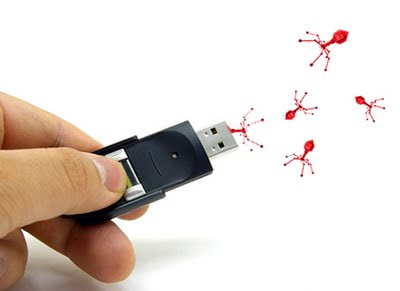 Every storage device owned by everyone should probably contain important files right guys? of course. But what if you cant access your files simply because a virus or viruses have taken lead of your own properties? it sounds annoying to me i don't know what it looks like to you but i cant just stand it. You may have been struggling for some time now, trying to remove viruses but you can just be successful. There are a good number of software out there to use to remove viruses. Some do work but for some i cant just imagine. Finding a software is also a problem for those with very slow or no connection at all. These procedure will help you even if you work offline, at home, online, i mean just everywhere. If you cant succeed using a software, then bellow is a simple but wise trick to saying good bye to shortcut and other viruses.You should be proud of being a solution to your own problem
Every storage device owned by everyone should probably contain important files right guys? of course. But what if you cant access your files simply because a virus or viruses have taken lead of your own properties? it sounds annoying to me i don't know what it looks like to you but i cant just stand it. You may have been struggling for some time now, trying to remove viruses but you can just be successful. There are a good number of software out there to use to remove viruses. Some do work but for some i cant just imagine. Finding a software is also a problem for those with very slow or no connection at all. These procedure will help you even if you work offline, at home, online, i mean just everywhere. If you cant succeed using a software, then bellow is a simple but wise trick to saying good bye to shortcut and other viruses.You should be proud of being a solution to your own problemNote: If you past just the exact content of the code attrib -h -r -s /s /d E:\*.* in the command line, then you might have totally unsuccessful results, so don't forget to change the E to the letter corresponding your drive.
- If you have been struggling with a shortcut virus for some time now, then its high time you say bye bye to it. If your antivirus has given up the fight, then you dont have to because the antivirus does not own the PC. I assure you that after using the quick guide, your files will be given freedom.
-
Click Start » Run / Winkey+R and type 'cmd' in the box provided - Hit Enter.
Copy paste the code below into the command prompt and hit 'Enter'.
attrib -h -r -s /s /d E:\*.*
(Remember to Change E: to your drive's Letter.) Type 'cls' to clear text shown on screen optional
You have to wait till the same line of code returns C:\Users\Renard>, so you can confirm the clearing by simply opening your affected drive.
a.)Go to the control panel to untick “Hide protected operating system files” or simply use the search box.
b.)Brows to “C:\Windows\System32” and manually delete regsvr
c.)If you can't find the file in System32, then try locating it in “C:\program files”
If you still cannot find it there,then try locating it in the “Processes” tab in Task Manager.
Good Luck Guys and don't forget to come back for more other posts, its your discussion room. More other posts to the right side of the this page.



thanks, it did worked for me greatly.
ReplyDeletethanks.
i made a mistake and left in E for my drive letter but discovered and did the corrections.
Thanks and hope you come back for more other posts related to that one.
Delete